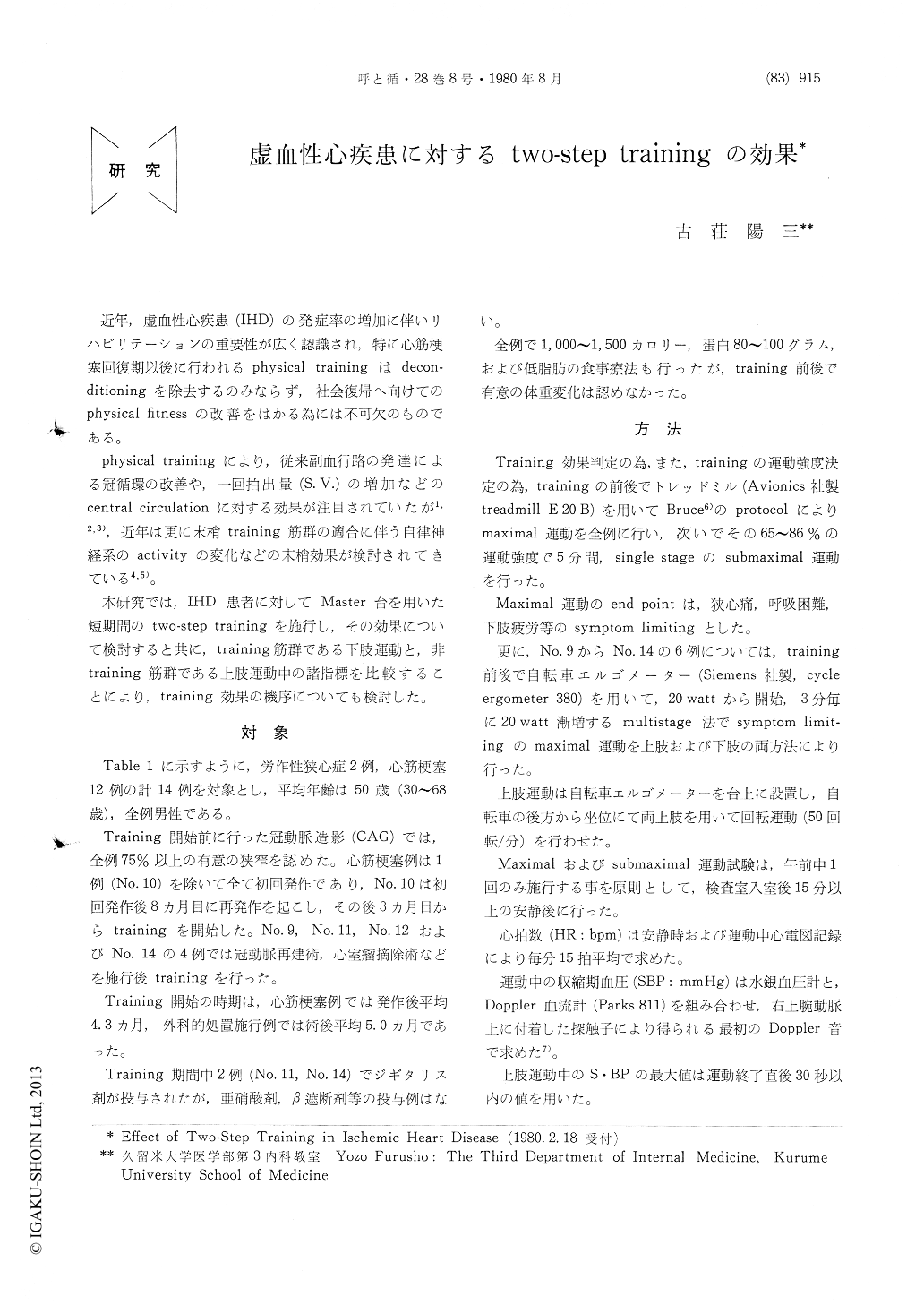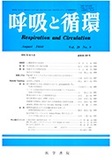Japanese
English
- 有料閲覧
- Abstract 文献概要
- 1ページ目 Look Inside
近年,虚血性心疾患(IHD)の発症率の増加に伴いリハビリテーションの重要性が広く認識され,特に心筋梗塞回復期以後に行われるphysical trainingはdecon—ditioningを除去するのみならず,社会復帰へ向けてのphysical fitnessの改善をはかる為には不可欠のものである。
physical trainingにより,従来副血行路の発達による冠循環の改善や,一回拍出量(S.V.)の増加などのcentral circulationに対する効果が注目されていたが1,2,3),近年は更に末梢training筋群の適合に伴う自律神経系のactivityの変化などの末梢効果が検討されてきている4,5)。
To evaluate the training effect in patients with ischemic heart disease, 14 male patients underwent two-step exercise with an intensity of 70-80% of symptom-limited maximal oxygen uptake (VO2SL) for 6 to 9 min., being performed 4 times a day for 3 to 8 weeks. Their age ranged from 30 to 68 years, including 12 cases of myocardial infarction, 2 cases of angina pectoris and 3 cases of post aorto-coronary operation or left ventricular aneurysmectomy.
The mechanism of this training effect was assessed in 6 patients (48 to 57 y.o.) by performing bicycle exercise of the upper and lower limbs before and after the training.

Copyright © 1980, Igaku-Shoin Ltd. All rights reserved.


